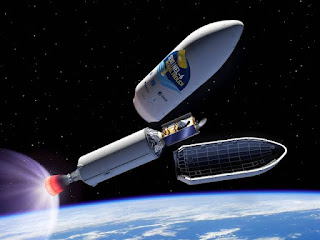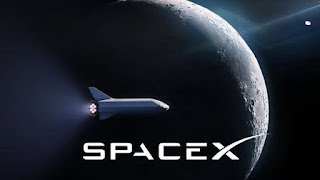Nasa Vs Spacex|How Different They Are|Nasa|Spacex.
Nasa Vs Spacex|How Different They Are|Nasa|Spacex.
NASA versus SpaceX How Different They Are?
Since the foundation of room travel, just three nations have had the option to dispatch people into space. The initial individual to go into space was a Russian cosmonaut Yuri Gagarin in 1961, who circled the earth in Vostok 1 on April 12, 1961. Just weeks after the fact, the United States dispatched its originally monitored shuttle, Freedom 7, conveying space traveler Alan Shepherd.
⬇️⬇️You May Like This Content.
Nasa Vs Spacex|How Different They Are|Nasa|Spacex.
Alein Planet| Life's On Other Planets| News About Alein Planets.
Mark Zuckerberg Inspiring Story Of Yong Billionaire.
Egypt|Ancient Egyptions,History and Mysterious Facts|Country Profile, Current Affairs.
Top 10 | Richest Person | In The World? | Richest Person Of World?(Updated 2022).
It wouldnt be until 2003 that China would dispatch its previously monitored mission, Shenzhou 5, taking Chinese space explorer Yang Liwei on an effective 21-hour mission into space and back. From that point forward, many space organizations have accomplished an incredible accomplishment, however nobody has had the option to approach NASA as far as progress.
Amidst this space race, Elon Musk brought forth a private space organization, SpaceX, which is ruling the business part of room investigation today. The private space organization has become so effective that individuals are really contrasting it and NASA.
Is SpaceX truly testing NASA, or they simply work one next to the other for a superior eventual fate of humanity? This article will assist you with understanding the significant contrasts among NASA and SpaceX, and how the future looks like for the two of them and space research all in all.
NASA versus SpaceX: A Brief Introduction
NASA (short for National Aeronautics and Space Administration) was made in 1958 under the National Space Act endorsed by U.S President Dwight D. Eisenhower. As per the demonstration, NASAs space investigation would always be dedicated to serene purposes to assist all humanity.
It wasnt until July 20, 1969, that NASA spearheaded the space travel when it dispatched the Apollo 11 into space and made the principal effective moon landing.
SpaceX, a brainchild of tech business visionary Elon Musk, was established back in May 2002. His way of thinking behind the SpaceX is making life multi-planetary by ultimately colonizing Mars. Throughout the long term, in his different meetings, Musk has expressed that human termination on planet earth is inescapable.
Whats in the Future?
NASA is as of now dealing with various high-profile space projects. Some huge missions incorporate NISAR (NASA-ISRO Synthetic Aperture Radar), a joint endeavor among NASA and ISRO, to foster a double recurrence manufactured gap radar satellite for remote detecting. Wide-Field Infrared Survey Telescope (WFIRST) and Euclid, both qualified for explore the dull energy.
Back in 2006, NASA declared an aggressive mission to foster an extremely durable base on the moons surface, however was ended by the previous President Barack Obama and coordinated a nonexclusive spotlight on monitored missions to space rocks and Mars, just as expanding support for the ISS.
As per NASAs assessment, it wouldnt be until 2030 that it will actually want to move people to the Red planet.
The private space investigation element SpaceX, then again, has set high focuses for the following decade. The organization pledged to foster a reusable dispatch framework that can be utilized instantly.
Musk has likewise expressed that one of his significant objectives is to work on the expense to get to the space, at last by a component of ten. In May 2020, the SpaceX Crew Dragon rocket dispatched two NASA space explorers, Douglas Hurley and Robert Behnken, to the International Space Station, beginning another period in human spaceflight.
SpaceX has large intends to fly Crew Dragon to space with people not long from now. Demonstrating that they can dispatch people securely into space is an achievement in that excursion.
The organization has likewise broadcasted that inside 50-100 years, its Interplanetary Transport framework will ship 1 million individuals to Mars. With todays accessible innovation, sending one man into the Red planet would cost around $10 billion.
Cash Matters
All things considered, from 1958 to 2012, NASAs yearly spending plan has been around 1% of the government spending plan. Just for a concise period, its spending plan assignment saw a flood because of the Apollo mission in 1966, cresting at 4.41%. For the Fiscal Year 2020, NASA has $22.629 billion from the central government, which addresses 0.48% of all US government spending.
Until May 2012, SpaceX had worked with all out financing of $1 billion in its initial ten years of activity. This incorporates numerous private values and Musks own speculation of around $100 million. The rest of come from installments on long haul dispatch agreements and advancement contracts. The organization likewise delighted in numerous government and state appropriations, including immense advances.
In 2015, SpaceX brought more than $1 billion up in financing from Google and Fidelity, building up the organization valuation at around $12 billion. There was theory over SpaceX that it would open up to the world after an IPO in 2012, yet it was before long excused by Elon Musk.
Starting at 2019, the worth of SpaceX has ascended to $33 billion. The point by point spending plan of the organization isn't accessible as it's anything but a public organization.
As indicated by Morgan Stanley, most of SpaceXs esteem comes from its Starlink satellites. Starting at 2020, it is worth about $42 billion. Its movement business is worth about $9 billion, and the dispatch business is esteemed at $1 billion. Profound space investigation, until further notice, worths nothing. Be that as it may, assuming Musks Starlink web plan works, SpaceX could be a $175 billion organization.
Peruse: Can I Buy SpaceX Stock? The amount Is It Worth Today?
Accomplishments
All things considered, there is a ceaseless rundown of NASAs accomplishments throughout the long term, however we will attempt to keep it brief. Aside from its unbelievable Apollo missions, one of which made a human presence on the moon surface conceivable, Project Gemini (second monitored mission), Voyager, and Pioneer missions are a portion of its longstanding accomplishments.
Peruse: 13 of the Biggest NASAs Future Missions
NASA has dispatched in excess of 100 ran missions and well more than 1000 automated missions into space since its foundation. Its last monitored space transport dispatch was in 2011. Yet, maybe NASAs most noteworthy late achievement was the fruitful dispatch of its Mars wanderer in 2011 and its continuous work on that planet.
Despite the fact that SpaceX is new in this field, it has effectively procured regard among other space organizations all throughout the planet. Its most fantastic creation to this date is the Falcon Heavy payload rocket, which is intended to convey individuals. It additionally has a rocket named Dragon, which is intended to convey payloads, yet the organization still up in the air to modify it for human space travel.
In 2010, SpaceX turned into the primary exclusive organization to effectively finish a space mission. After five years, in 2015, the organization accomplished an uncommon accomplishment in the wake of executing a directed arriving of an orbital rockets first stage ashore. They rehashed this accomplishment on the sea stage.
In 2019, SpaceX turned into the primary private space office to send a human-evaluated space apparatus to space and the principal private office to independently dock a space apparatus to the ISS. Musk has likewise revealed the companys plan to construct the universes biggest, completely reusable rocket, as of now booked for the 2020s.
Last Verdict
The historical backdrop of NASAs space missions is an entrancing story, and its the justification behind a lot of our comprehension of room. There is no question that without this veteran association, we would have a crude information on our environmental elements.
For quite a long time, NASA has been a foundation of room research in America. However, since Elon Musks SpaceX has shown up on the big screen, it will be fascinating to perceive how they will continue soon. Will NASA roll out any significant improvements in its future undertakings.











.jpeg)



0 Comments